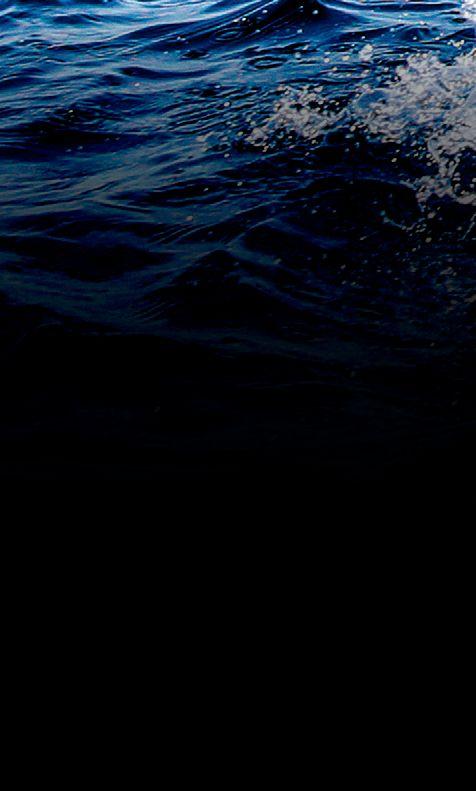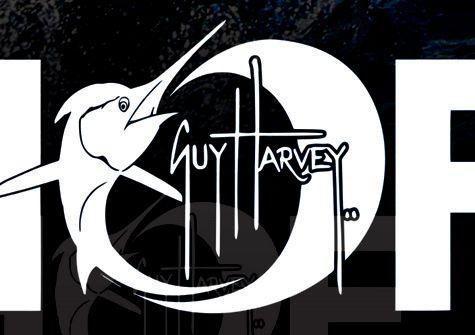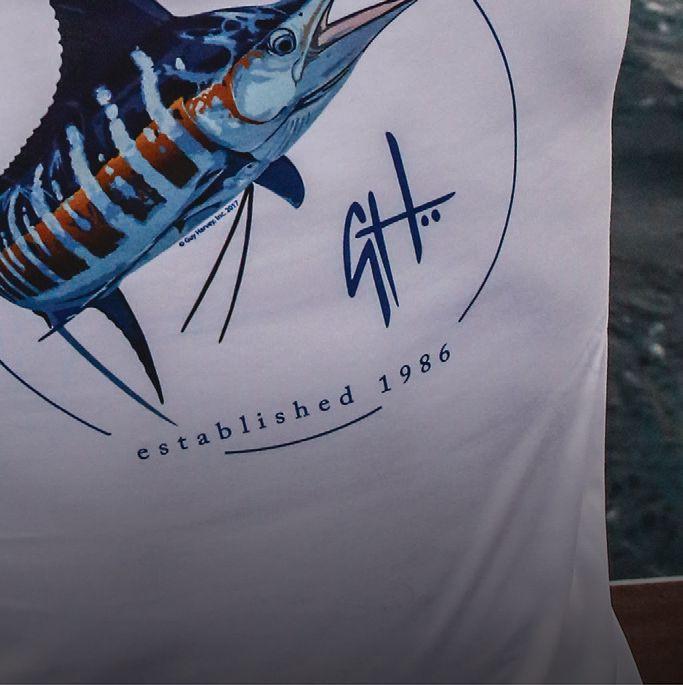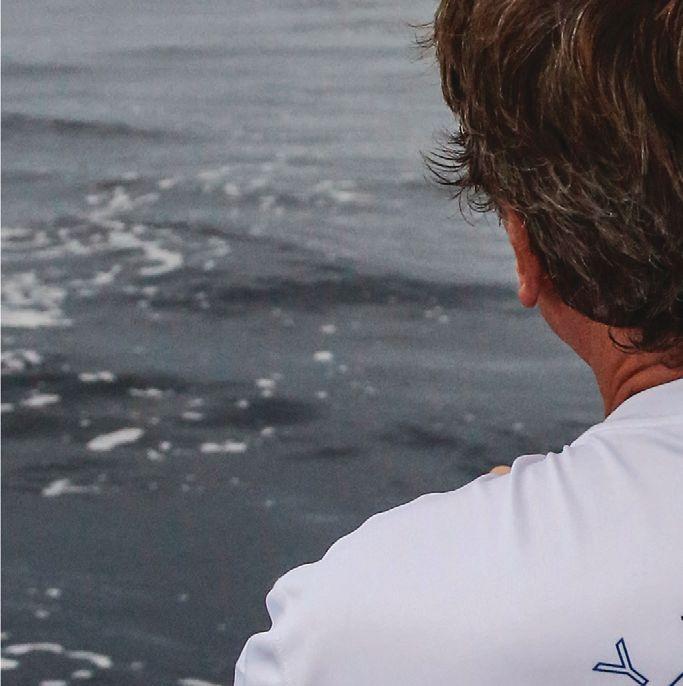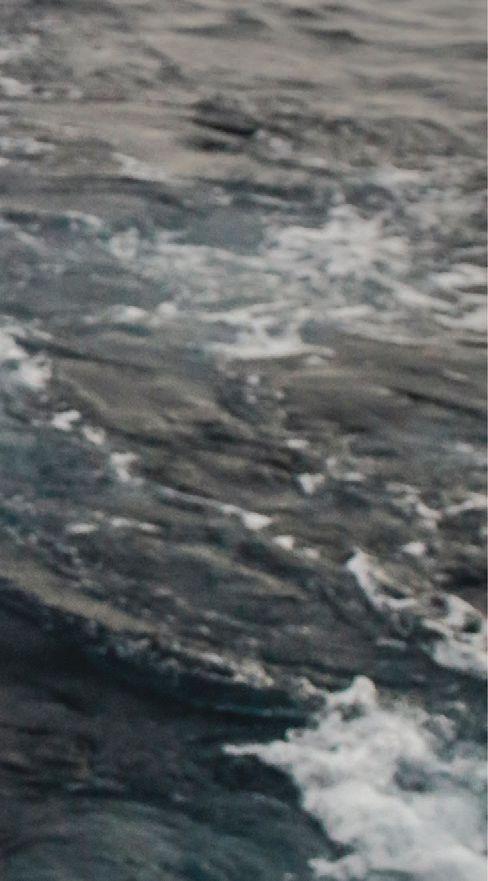
5 minute read
There were 28 gear categories and 28 winners at the 2018 ICAST Convention’s Product Showcase. For your convenience, we picked the top 11 winners that can improve your chances on the water
HOOKED ON TRIPLETAIL
FRED GARTH
For the past 25 years, Fred D. Garth’s articles have appeared in numerous books, magazines and newspapers around the world. Read his blog at: GuyHarveyMagazine.com.
My grandpa used to like to say, “There’s more than one way to skin a cat.” That was a gruesome image for a five-year-old to process. And who skins cats anyway, grandpa? What he meant, of course, is most tasks can be accomplished in various ways. For fishing people, there’s no more apt saying. We will try just about anything—short of fishing naked—to hook up. We have tackle boxes full of bizarre-looking lures, a boatload of rods, stinky fish tonics, all manners of dead and live bait, and endless methods of casting, reeling, popping and jerking, And, most importantly, is holding our mouths in perfect position.
After five decades of fishing, I thought I’d seen every cat-skinning method of angling. That is, until I accepted an invitation from some dudes in Georgia to stalk the elusive and tasty tripletail. Full disclosure here, these weren’t your typical Bubbas; they were the top dogs (bulldogs, I assume) from Georgia’s Department of Natural Resources (DNR). I’d been invited by Doug Haymans, the new DNR director of the Coastal Resources Division, and Spud Woodward, who had just retired from that same position, to fish Georgia’s stunningly beautiful Golden Isles region. Rounding out the crew was the Big Dog himself, Mark Williams, Commissioner of Georgia’s DNR. Needless to say, I was honored to share a day of fishing with folks who’ve dedicated their lives to the health and sustainability of the fishery. As you might expect, we followed the rules meticulously.
I’ve caught a few tripletails over the years along the northern Gulf of Mexico and they’re always fun. They put up a good fight, jumping sometimes and diving deep a lot. They can also liven up even the most boring dinner plate. The somewhat prehistoric-looking fish is so named because it has two, fat fins adjacent to the tail, which gives the appearance of three tails. It’s an unusual critter with odd habits. They’re usually spotted floating flat on the surface of the water like an ocean sunfish. The prevailing theory is they’re creating a shadow for unsuspected prey to hide in. Or they’re just sunbathing.
Tripletail tend to hang around surface structures, mainly crab trap buoys and such. The general fishing 101 is to spot them lounging on the surface and then throw a live shrimp close to their ugly noses. Having never fished the 100 miles of Georgia’s coast, I looked forward to slinging some live shrimp high and far. But as we motored a couple of miles offshore, I was baffled. There were no crab trap floats, no structure, no buoys. Just wide open water. Considering the company I was with, I kept my flap shut.
Doug was manning the elevated helm, which gave him the best vantage point. As we baited our hooks with pissed-off shrimp, Spud outlined the plan of attack. “Look for something that resembles a paper plate on top of the water,” he said.
“Huh?” I asked. “Did you say paper plate?”
“Yep, for some reason they go through a color change. They’re completely white, like a paper plate.”
“That’s a new one,” I said.
“As far as we know,” Spud said, “this is the only place where anyone has witnessed this type of behavior.”
Doug cruised around somewhat aimlessly at idle speed. He seemed to know what he was doing, so I admired the shoreline of Jekyll Island about a mile away and scanned the surface for paper plates.
“They get easier to see as the sun gets higher in the sky,” Doug explained.
Sure enough, after less than 10 minutes of searching, Doug spotted the first tripletail. As Spud had declared, she was white. Live shrimp flew and splashed down nearby. The fish casually disappeared. Not interested. A few minutes later, we cast at another one. Same result. Then another and another, and each ignored the shrimp we dropped within sniffing distance. Then, I hit one in the face with a flying shrimp. Not on purpose. My cast was just too close. He splashed wildly and dove. We weren’t having trouble finding them, they just weren’t eating. We’d seen about 20 fish and had made multiple casts when Mark finally enticed one to
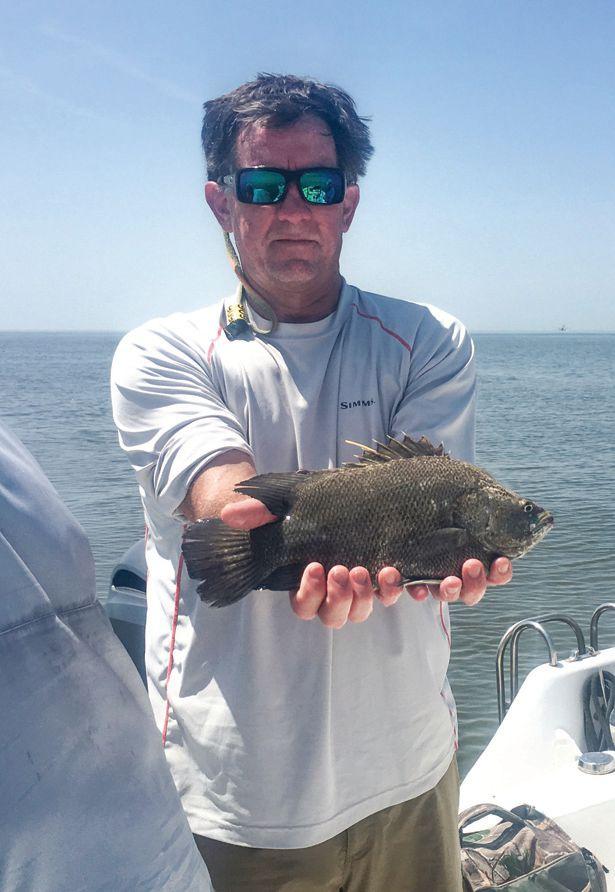
eat his shrimp. I checked Mark’s mouth position: slightly opened with a sly smile.
I did my best to imitate his expression—even without the Copenhagen bulge—and BAM! I caught the next fish. Works every time.
Doug kept finding fish and we kept chunking shrimp. We ended up landing six or seven nice fish and spotting more than 50. Even though it’s one of the most delicious fish in the sea, we released them all. I do like a nice fillet on the griddle, but catch and release seemed like the right thing to do considering the circumstances. Of course, we tagged each with a dart tag.
The excursion was deemed a massive success so we eased
back to the dock feeling proud and satisfied. I did a lot of listening as these dedicated men discussed the challenges they face, like, eradicating invasive species, balancing commercial and sport fishing, state versus federal rules, fish stock assessment, growing hatchery fish, and so on and so forth. It’s a tough job, but these guys are always looking for new and innovative ways to skin cats. My old grandpa, who I fished with often, would be proud. Left: Georgia’s Department of Natural Resources Commissioner Mark Williams gently cradling a tripletail. Below: Former DNR Director Spud Woodward tags a tripletail. Photos by Fred Garth.


